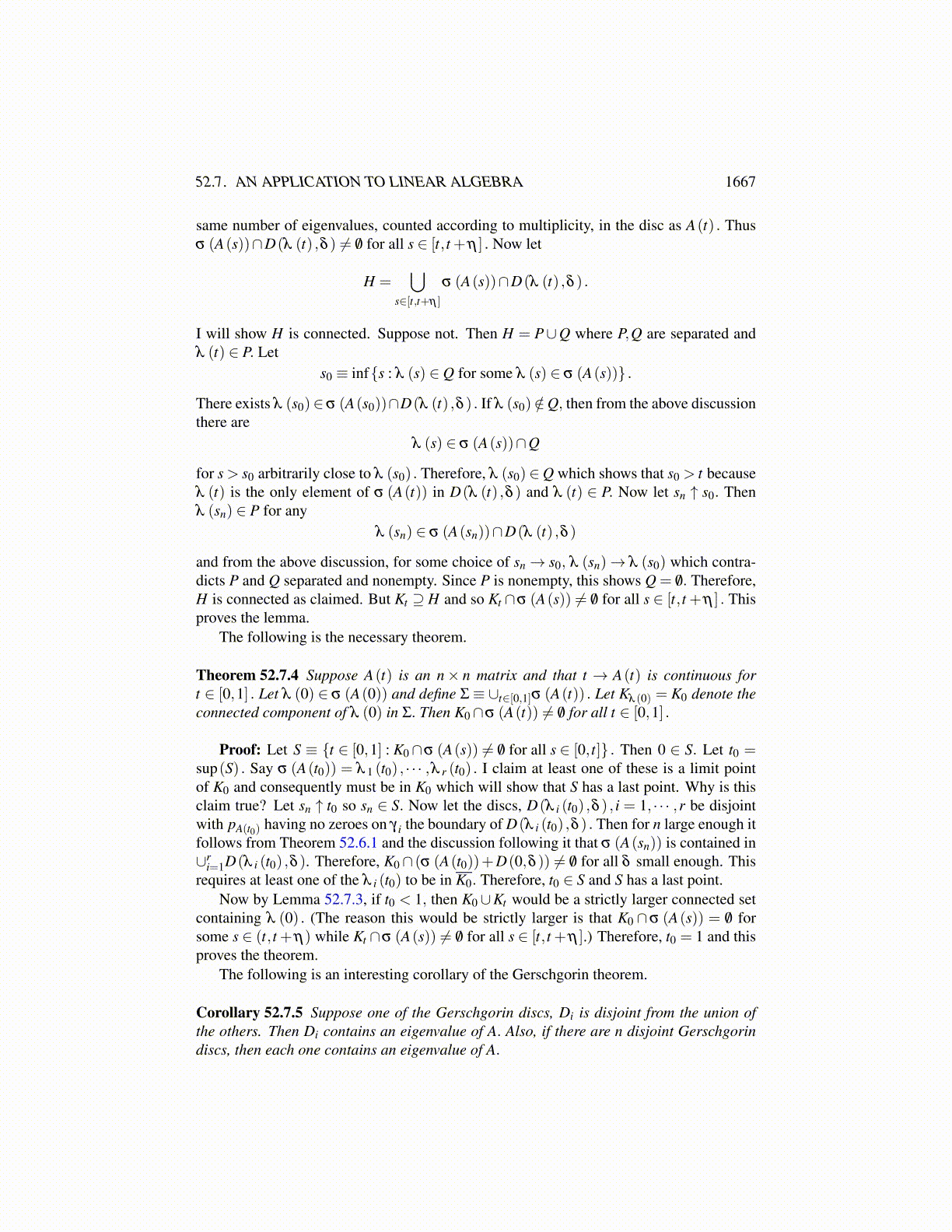
52.7. AN APPLICATION TO LINEAR ALGEBRA 1667
Theorem 52.6.4 (open mapping theorem) Let Ω be a region and f : Ω→ C be analytic.Then f (Ω) is either a point or a region. If f is one to one, then f−1 : f (Ω)→Ω is analytic.
Proof: If f is not constant, then for every α ∈ f (Ω) , it follows from Theorem 51.5.3that f (·)−α has a zero of order m < ∞ and so from Theorem 52.6.3, for each a ∈Ω thereexist ε,δ > 0 such that f (B(a,ε))⊇ B(α,δ ) which clearly implies that f maps open setsto open sets. Therefore, f (Ω) is open, connected because f is continuous. If f is one toone, Theorem 52.6.3 implies that for every α ∈ f (Ω) the zero of f (·)−α is of order 1.Otherwise, that theorem implies that for z near α, there are m points which f maps to zcontradicting the assumption that f is one to one. Therefore, f ′ (z) ̸= 0 and since f−1 iscontinuous, due to f being an open map, it follows
(f−1)′ ( f (z)) = lim
f (z1)→ f (z)
f−1 ( f (z1))− f−1 ( f (z))f (z1)− f (z)
= limz1→z
z1− zf (z1)− f (z)
=1
f ′ (z).
This proves the theorem.
52.7 An Application To Linear AlgebraGerschgorin’s theorem gives a convenient way to estimate eigenvalues of a matrix fromeasy to obtain information. For A an n× n matrix, denote by σ (A) the collection of alleigenvalues of A.
Theorem 52.7.1 Let A be an n×n matrix. Consider the n Gerschgorin discs defined as
Di ≡
{λ ∈ C : |λ −aii| ≤∑
j ̸=i
∣∣ai j∣∣} .
Then every eigenvalue is contained in some Gerschgorin disc.
This theorem says to add up the absolute values of the entries of the ith row which areoff the main diagonal and form the disc centered at aii having this radius. The union ofthese discs contains σ (A) .
Proof: Suppose Ax = λx where x ̸= 0. Then for A = (ai j)
∑j ̸=i
ai jx j = (λ −aii)xi.
Therefore, if we pick k such that |xk| ≥∣∣x j∣∣ for all x j, it follows that |xk| ̸= 0 since |x| ̸= 0
and|xk|∑
j ̸=k
∣∣ak j∣∣≥ ∑
j ̸=k
∣∣ak j∣∣ ∣∣x j
∣∣≥ |λ −akk| |xk| .
Now dividing by |xk| we see that λ is contained in the kth Gerschgorin disc.